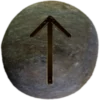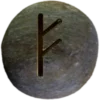Last Updated on March 20, 2025
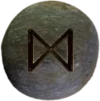
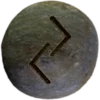
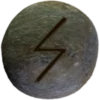
Meaning and Symbolism
Dagaz (pronounced “DAH-gahz”) appears in various forms. Some spellings include “Dag,” “Dæg,” and “Daeg.” The Old English letter “æ” (ash) in “Dæg” sounds like “a” in “cat.” Dagaz means “day” or “dawn.” It represents transformation, awakening, and clarity. The rune signifies a major shift, much like night turning into day. Many associate it with illumination, new beginnings, and breakthroughs.
The rune resembles an angular infinity symbol. Some see it as two intersecting triangles or an hourglass shape. This structure reinforces the idea of balance and cyclical change. Dagaz shows two opposing forces meeting at a center point, symbolizing harmony.
Connection to Norse Mythology
While not directly named in the Eddas, its meaning aligns with dawn-related myths. The god Dellingr, whose name means “dawn,” plays a role in the poetic tradition. He fathers Dagr, the personification of day. This connection strengthens the rune’s association with daylight and enlightenment.
Uses in Divination
Dagaz signals clarity, awareness, and progress. It often means a situation will improve or that understanding will come. If reversed, it may suggest resisting change or failing to see the truth. However, some believe Dagaz has no reversed meaning due to its symmetrical design.
Runes like Dagaz appeared on stones, wood, and weapons. Germanic tribes likely inscribed it on talismans for protection and guidance. Some historians link it to the practice of marking significant changes, such as solstices or victories.
Modern people use Dagaz for focus and clarity. Meditation on the rune may help bring insight. Some carve it onto personal items to attract success and understanding.
Runic Poems and Cultural References
The Anglo-Saxon Rune Poem describes Dagaz indirectly. The stanza for “dæg” (day) speaks of light overcoming darkness. This aligns with the rune’s core meaning of transformation and illumination. ![]()
Runes Associated with Dagaz
Jēra (ᛃ) and Sowilō (ᛋ) connect to Dagaz (ᛞ) through cycles and illumination. ![]()
Jēra (YEH-rah) represents the harvest and the turning of seasons. It reflects time’s passage and rewards for patience. The rune’s shape suggests movement, symbolizing progress and natural rhythms. It carries the idea of transformation and culmination.
Sowilō (SOH-wee-loh) embodies the sun’s power and guiding light. It brings clarity, strength, and personal success. Its energy drives forward momentum, much like Dagaz’s breakthrough symbolism. The shape resembles a continuous path, reinforcing perseverance and direction.
Both runes emphasize change, growth, and enlightenment. Jēra ensures steady progression, while Sowilō fuels decisive action. Together, they reinforce Dagaz’s meaning of new beginnings and realization.
Its Power in Asatru
Dagaz symbolizes transformation, enlightenment, and new beginnings. It represents the shift from darkness to light, marking a moment of awakening. Asatruar see it as a rune of clarity, balance, and decisive change.
This rune connects to personal growth and the pursuit of wisdom. It reminds Asatruar to embrace change with courage and trust in destiny. It also signifies the dawn, linking it to cycles of renewal and perseverance.
In rune casting, it suggests breakthrough moments and sudden realization. It warns against hesitation and encourages action when opportunities arise. Asatruar value its energy in rituals seeking insight or renewal. The rune’s symmetry reinforces its message—change is inevitable, yet balance must be maintained. Its presence inspires trust in fate and the strength to move forward.

